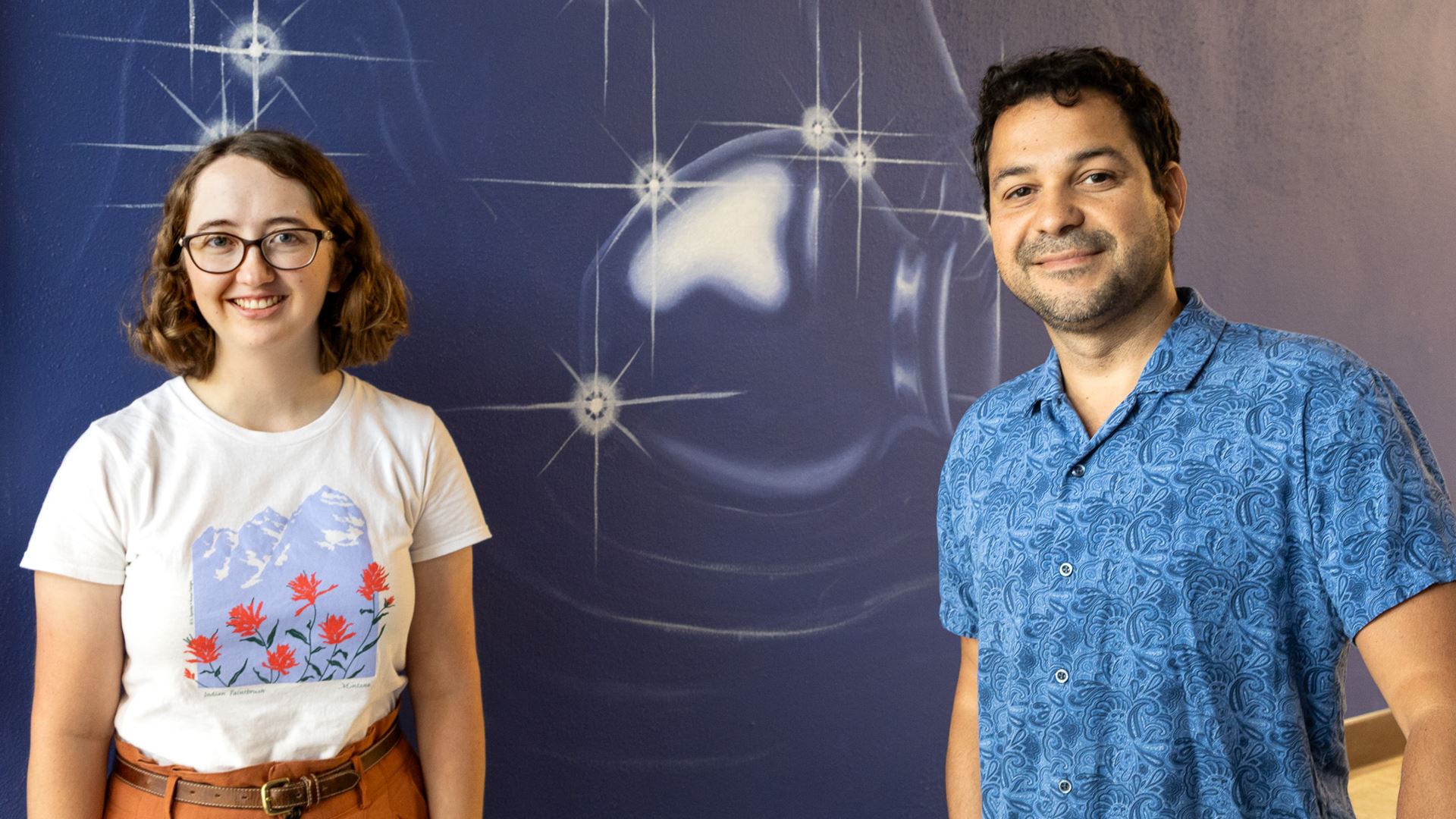New Mexico State University Astronomy Associate Professor Wladimir Lyra has received a new $450,000 grant from the National Science Foundation that will allow him to learn more about planetary formation by studying a star system over 500 light-years away.
The grant funds a three-year collaborative research project between principal investigator Lyra, co-principal investigator and Assistant Professor Cassandra Hall from the University of Georgia and NMSU astronomy Ph.D. student Eleanor Serviss. Their research focuses on a star known as AB Aurigae and the disk that surrounds it. Within this disk orbits the first, and currently the only, credible claim of a detection of a planet that formed via a method known as gravitational instability.
"What's exciting to me about AB Aurigae is that we get to test a hypothesis,” Lyra said. “We still don't understand how planets form, but the AB Aurigae system matches most theoretical expectations of a long-debated process of planet formation. That's super interesting."
“Looking at planet formation in other systems is like having a time machine that lets us look back in time to the formation of our own solar system,” Hall said. “That’s what makes it so exciting.”
Yet, within the complex disk of AB Aurigae there are some features that seem to conflict with the gravitational instability theory. Through this grant, Lyra, Hall and Serviss aim to develop an improved model to simulate the dynamics of the AB Aurigae system. If their simulations reproduce these features, it will be evidence in favor of the gravitational instability theory of planet formation. Whether their findings support or refute this theory, their work contributes a valuable tool to the planet formation field.
“It’s a complete win-win. Whatever we find will be something interesting that advances our understanding of the planet formation process within circumstellar disks,” Lyra said.
For Serviss, this is an opportunity to bring her multidisciplinary skills onto a project she’s followed for years.
“There was a paper that Wlad was the lead theory author on about discovering this planet, AB Aurigae b,” Serviss said. “I remember reading it and thinking it was world changing—it revolutionizes how we understand how planets form. Now, two years later, I’m at NMSU working on this project and it is tailor-made for what I’m interested in.”
Serviss describes her background as a winding path through physics, astronomy and geoscience tied together by studying planet formation. She’ll be creating three-dimensional simulations of the disk of gas and dust around AB Aurigae to better understand its dynamics and behavior, applying her knowledge of rivers to the fluid dynamics of the AB Aurigae system.
“I’m really interested in how thoroughly we’re studying this one system, and how eventually this will be applied to other systems. I’m really excited about that,” Serviss said.
Beyond the research, this grant emphasizes community outreach efforts. From monthly astronomy columns in local newspapers to outreach programs for middle school students in under-represented communities, Lyra and Hall strive to increase public engagement and literacy in STEM with support from this NSF grant.
-30-
CUTLINE: New Mexico State University Astronomy Associate Professor Wladimir Lyra receives an NSF grant to study planet formation around a distant star. Pictured here with Ph.D. student Eleanor Serviss. (NMSU photo by Sarah Kimmerly)
CUTLINE: New Mexico State University Astronomy Associate Professor Wladimir Lyra and Ph.D. student Eleanor Serviss discuss their research on the AB Aurigae system. (NMSU photo by Sarah Kimmerly)

